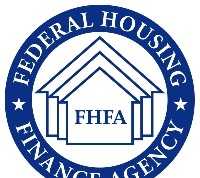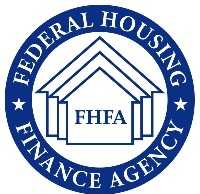WASHINGTON, DC – December 8, 2011 – (RealEstateRama) — The U.S. Department of Housing and Urban Development (HUD) and the U.S. Department of the Treasury today released the November edition of the Obama Administration’s Housing Scorecard – a comprehensive report on the nation’s housing market. Included in this month’s report are detailed assessments for the 10 largest mortgage servicers participating in the Making Home Affordable Program with results from the third quarter of 2011. In addition to providing greater transparency about servicer performance in the program, the servicer assessments – first introduced in June 2011 and published quarterly – are intended to set a new industry benchmark for disclosure around servicer efforts to assist struggling homeowners, while prompting them to correct identified deficiencies.
“The mortgage servicing industry lacked accountability and transparency when this crisis started,” said Treasury Assistant Secretary for Financial Stability Tim Massad. “Publishing these servicer assessments is key to our efforts to hold servicers publicly accountable for their performance and keep necessary pressure on them to improve. We’ve seen movement in the right direction, and we will keep this up so that the industry continues to change its ways.”
Since the inception of the Making Home Affordable Program, Treasury has required participating servicers to take specific actions to improve their servicing processes to more effectively assist struggling homeowners. The latest Servicer Assessments summarize performance on three categories of program implementation: identifying and contacting homeowners; homeowner evaluation and assistance; and program reporting, management and governance. For the third quarter of 2011, only JPMorgan Chase, NA was found to be in need of substantial improvement under the program. While JPMorgan Chase demonstrated some progress in areas reported for the third quarter, the servicer has a number of outstanding items from previous quarters that have not yet been addressed and play a critical part in their broader execution of the program. For these reasons, Treasury will withhold servicer incentives from JPMorgan Chase for the third consecutive quarter and will permanently reduce incentives owed to JPMorgan Chase unless the outstanding items are addressed before the next assessment.
Bank of America, NA was found to be in need of moderate improvement for the third quarter of 2011 but will continue to have its servicer incentives for previous quarters withheld. Although Bank of America has not yet remediated all of the areas previously identified as requiring substantial improvement from the previous quarter, it has made progress in addressing a number of items.
The assessments indicate that servicers have been focusing attention on areas identified through regular compliance and program reviews. For example, the error rate with respect to servicers’ calculations of homeowner income has declined from an average of 17.5 percent as of the first quarter of 2011 to 3.8 percent as of the third quarter (income calculation is used to determine eligibility and payment amount for the Home Affordable Modification Program (HAMP)). More information about the results reported in the Administration’s Servicer Assessments for the third quarter of 2011 can be found at http://www.treasury.gov/initiatives/financial-stability/results/MHA-Reports/Pages/default.aspx.
As the Administration continues to push servicers to provide more effective assistance to struggling homeowners through its foreclosure prevention programs, the ongoing fragility of the housing market demonstrates the need for the Administration’s recovery efforts in hard hit communities. The November Housing Scorecard features key data on the health of the housing market and the impact of the Administration’s foreclosure prevention programs, including:
- The Administration’s recovery efforts continue to help millions of families deal with the worst economic crisis since the Great Depression. More than 5.4 million modification arrangements were started between April 2009 and the end of October 2011 – including more than 1.7 million HAMP trial modification starts, more than 1.1 million FHA loss mitigation and early delinquency interventions, and more than 2.5 million proprietary modifications under HOPE Now. While some homeowners may have received help from more than one program, the total number of agreements offered continues to more than double the number of foreclosure completions for the same period (2.4 million). As of October, more than 880,000 permanent mortgage modifications have occurred through HAMP, with a median payment reduction for the homeowner of 37 percent.
- Eligible homeowners entering HAMP have a high likelihood of earning a permanent modification and realizing long-term success. Eighty-two percent of eligible homeowners entering a HAMP trial modification since June 1, 2010 received a permanent modification, with an average trial period of 3.5 months. Homeowners in HAMP permanent modifications have saved an estimated $9.4 billion to date. View the October MHA Performance Report.
Also featured this month is the Administration’s Housing Scorecard Regional Spotlight on market strength in Atlanta, Georgia and surrounding communities. The Atlanta metro area was one of the hardest hit areas in the nation following the housing market downturn and an area where the Administration’s broad approach to stabilizing the housing market has been very active.
“Despite growing evidence of progress in the broader economy, the housing data in this month’s Scorecard offer continued mixed signals and some signs of weakness in the market,” said HUD Assistant Secretary Raphael Bostic. “The Administration remains committed to helping all homeowners who have been hit hard during this housing crisis, and as the Regional Spotlight shows our efforts have helped over 135,000 families avoid foreclosure in Atlanta. But we have much more work to do to reach the many households who still face trouble and to help the market recover.”
The bi-monthly Housing Scorecard Regional Spotlight features data on the health of the Atlanta housing market and impact of efforts to help homeowners at the local level including:
- The Atlanta market is under pressure from a high percentage of distressed mortgages, deeply discounted foreclosed properties, low property values, and many severely underwater mortgages. Although the share of distressed mortgages in and around Atlanta – those 90 or more days delinquent, in foreclosure, or bank owned – has been above the national average since mid-2000, the local foreclosure crisis has generally mirrored that of the nation as a whole, with a significant rise in delinquencies and defaults among high-cost subprime loans beginning in 2007. Moreover, the home sales market remains sluggish in Atlanta as local home prices have shown signs of rebounding since early 2009, but remain at low levels not seen in more than a decade.
- More than 135,000 Atlanta households have received mortgage modifications, many through direct Administration programs. Since April 1, 2009 135,800 mortgage assistance interventions have been offered to homeowners in the Atlanta metropolitan area. More than 114,300 interventions were offered through HAMP and the FHA loss mitigation and early delinquency intervention programs. An estimated additional 21,500 proprietary modifications have been offered through HOPE Now Alliance servicers. While some homeowners may have received help from more than one program, more assistance has been offered than foreclosures completed during this period (92,800).
- The Administration’s Hardest Hit Fund and Neighborhood Stabilization Programs have fueled local foreclosure prevention efforts and market stability. Georgia has received more than $339 million through the Hardest Hit Fund to implement local solutions to borrower mortgage defaults and address the range of factors that contribute to a family’s financial problems. Moreover, approximately $91.2 million has been awarded to seven jurisdictions through the Neighborhood Stabilization Program to help purchase or redevelop residential properties and address the effects of abandoned and foreclosed housing. In addition, the State of Georgia has received an additional $97 million toward neighborhood stabilization. Both programs have helped provide stability to the Atlanta housing market.

















